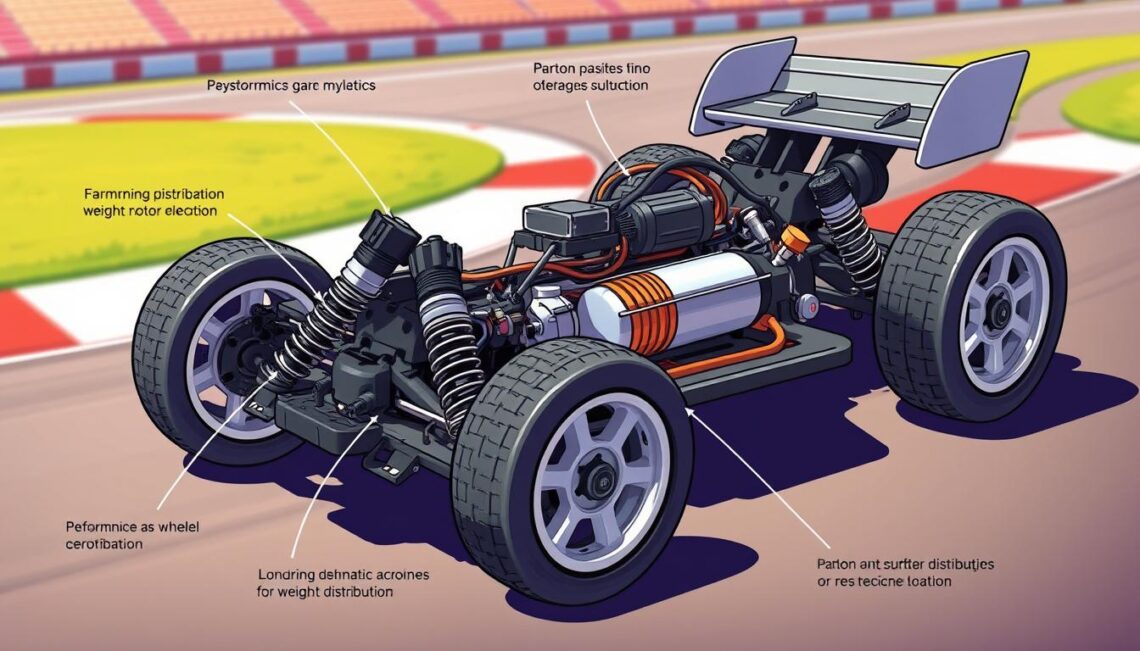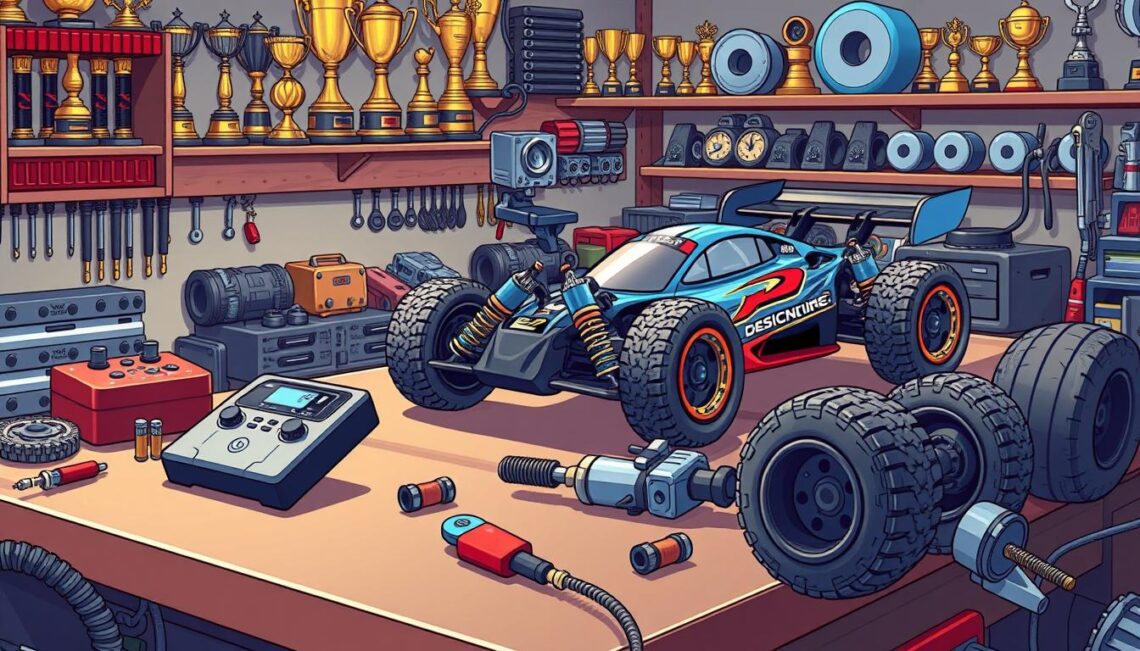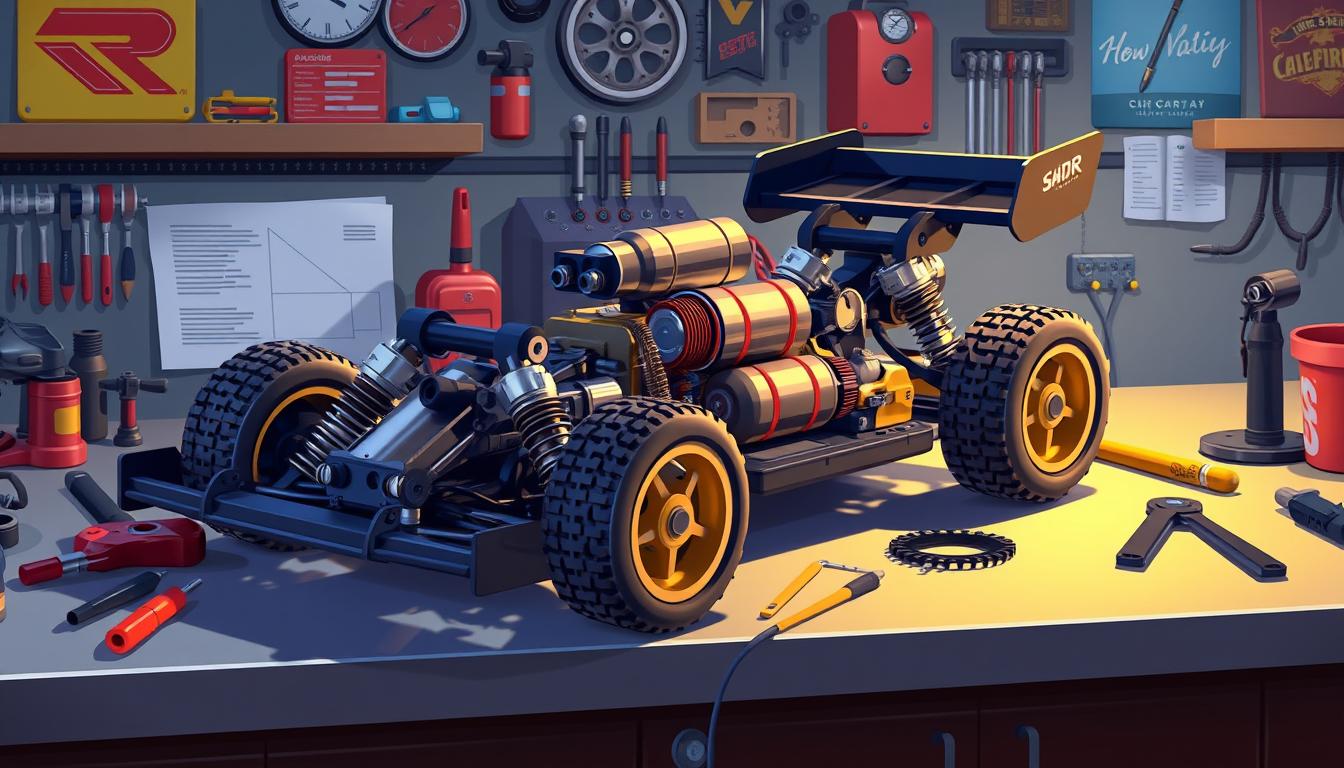Are you ready to take your RC car racing experience to new heights? The art of RC car tuning is essential for anyone looking to achieve maximum performance on the track. Small adjustments in key components can make a significant difference, leading to improved lap times and greater control. In this section, we’ll explore the fundamentals of RC car tuning, focusing on how it can enhance performance and provide you with vital racing tips. By understanding the balance between speed and handling, both hobbyists and competitive racers will unlock their true potential behind the wheel.
Understanding the Basics of RC Car Performance
Achieving optimal performance in an RC car relies on understanding various fundamental elements. Grasping how each of these factors interacts can significantly enhance speed and maneuverability. The two key areas to focus on are the essential components that affect performance and the critical aspect of weight distribution.
Key Components that Affect Performance
The performance of an RC car is highly dependent on its core components. Each part contributes to the overall functionality and efficiency of the vehicle. Consider the following significant RC car components:
- Motor: Determines the speed and acceleration of the car.
- Battery: Affects run time and power output.
- Tires: Influence traction and grip on various surfaces.
- Drivetrain: Impacts responsiveness and handling capabilities.
And while these components are crucial in the RC world, enthusiasts of full-sized vehicles often rely on tools like EpicVIN. You have to understand a car’s background to improve RC performance.
The Importance of Weight Distribution
Proper weight distribution is a cornerstone of RC car performance factors. The placement of weight can drastically affect how a car handles corners and maintains stability during high-speed runs. A well-balanced car is less likely to rollover and can navigate turns more effectively.
“A good balance in weight distribution allows for controlled handling, making it essential to consider when tuning your vehicle.”
Implementing tuning basics that address weight distribution can provide racers with a competitive edge, leading to consistent and reliable performance on varied terrains.

How to Tune Your RC Car for Maximum Performance
Tuning your RC car involves a series of well-considered adjustments that greatly influence the vehicle’s performance. Two essential areas to focus on are suspension tuning for optimal handling improvement and tire pressure adjustments that enhance traction. Understanding how these elements work together will ensure your RC car is race-ready.
Adjusting Suspension for Optimal Handling
RC car suspension tuning plays a crucial role in how your vehicle responds to different tracks and racing conditions. Various types of suspension systems exist, including articulating and independent setups. Each offers unique characteristics suitable for specific applications. Key adjustments to consider include:
- Ride Height: Lowering the ride height can increase stability at high speeds, but balancing it for jumping and bumpy tracks is essential.
- Dampening: Adjusting dampening settings affects how quickly the suspension responds to bumps, providing better control during turns.
Tweaking Tire Pressure for Better Traction
Effective tire pressure adjustments can dramatically affect your car’s grip on various surfaces. A well-optimized tire pressure can increase traction, ensuring better control in corners and during acceleration. Expert recommendations suggest:
| Surface Type | Recommended Pressure Range (psi) | Impact on Traction |
|---|---|---|
| Asphalt | 25-30 | Excellent grip and stability |
| Dirt | 15-20 | Improved control on loose surfaces |
| Grass | 20-25 | Prevents sinking and maintains speed |
Making precise adjustments to your RC car’s suspension and tire pressure can create significant improvements in handling and traction, ultimately leading to a more enjoyable racing experience.
Advanced Tuning Techniques for Serious Racers
For seasoned RC car enthusiasts, advanced RC car tuning techniques can make the difference between crossing the finish line first or falling behind. Understanding the impact of motor upgrades and the right electronic speed control (ESC) can elevate performance and efficiency. Adjusting gear ratios further enhances speed and acceleration, tailored to specific racing conditions.
Upgrading Your Motor and Electronic Speed Control (ESC)
Investing in high-quality motor upgrades is crucial for boosting your RC car’s performance. A more powerful motor allows for increased speed and torque, which can significantly improve lap times. Brands like Castle Creations and Hobbywing offer robust motors and ESCs designed for optimal compatibility, ensuring seamless integration and enhanced functionality.
Customizing Gear Ratios for Specific Tracks
Adjusting gear ratios is a vital step in tuning your RC car for different track environments. Gear ratios affect acceleration and top speed, so finding the perfect balance is essential. To calculate optimal gear ratios, use the formula: Gear Ratio = (Number of Teeth on Pinion Gear) / (Number of Teeth on Spur Gear). Here’s a quick overview of recommendations based on track types:
| Track Type | Recommended Gear Ratio | Purpose |
|---|---|---|
| Short and Tight | 3.5:1 | Quick acceleration for tight corners |
| Long and Fast | 4.5:1 | Higher top speed for stretches |
| Mixed | 4.0:1 | Balanced performance for various sections |

Gaining insights from experienced racers emphasizes the impact of these upgrades on competitive performance. By mastering motor upgrades, fine-tuning ESC settings, and customizing gear ratios, serious racers can unlock new levels of speed and control.
Maintenance Tips to Keep Your RC Car at Peak Performance
Regular RC car maintenance is essential for maintaining performance and prolong life. A clean and well-maintained vehicle not only performs better but also remains competitive on the track. Start by setting up a routine cleaning schedule; after every race, use a soft brush and a suitable cleaning solution to remove dirt and debris from your car. Pay attention to the chassis, wheels, and other components to ensure everything runs smoothly.
Lubrication is another critical aspect of performance upkeep. Utilize high-quality lubricants specifically designed for RC vehicles, and apply them to moving parts such as gears, bearings, and suspension components. This not only reduces wear but also improves the overall responsiveness of your car. Additionally, keep an eye on tire conditions and check that they are properly inflated; under-inflated tires can lead to poor handling and performance issues.
Lastly, conduct regular inspections of battery connections, wiring, and other electrical components to avoid unexpected failures. Checking for loose connections or corrosion will ensure that your car maintains optimal performance. By adhering to these maintenance tips, you can be certain that your RC car remains in peak condition, helping to prolong its life while enhancing your racing experience.

